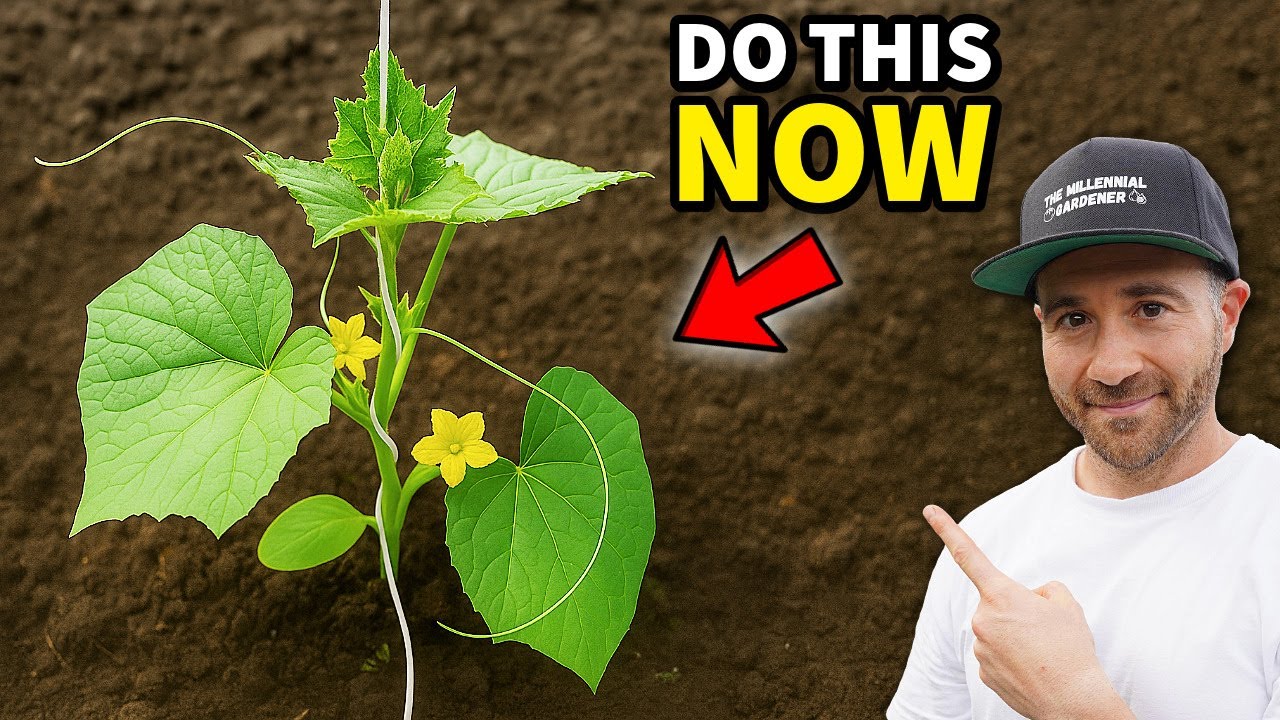Get ready, because cucumber season is back in full swing, and it’s time for you to dive right in! With the second part of this vibrant season starting now, you’re all set to explore fresh, crunchy cucumbers and discover exciting ways to enjoy them. Let’s get going and make the most of this delicious season together!
Introduction
If the phrase “cucumber season” conjures images of sun-drenched afternoons and rows of greenery swaying in a gentle breeze, then you’re already halfway there. But let’s face it: growing cucumbers isn’t just about luck and the occasional rainstorm. It’s a delicate dance—one that involves timing, patience, and the kind of attention that can turn a humble seed into a sprawling, crunchy bounty. Welcome back to the sequel of your favorite summer saga: Cucumber Season Part 2, where the stakes are higher, the vegetables are tastier, and the opportunities to harvest are endless. Spring has nudged us into planting territory, so grab your favorite watering can, a handful of seed packets, and a dash of optimism—because it’s time to kick off this cucumber adventure.
As outdoor temperatures sashay into the ideal zone—somewhere comfortably warm but not scorching—your garden beckons with the promise of verdant growth. Whether you’re a seasoned vine whisperer or just embarking on your cucumber-growing journey, it’s the perfect season to get those seedlings in the ground. Think of this as the garden’s second act, where hustle and care can yield a continuous harvest from late spring into autumn. With a little savvy, some organic fertilizer, and support structures to make the vines happy, you’ll soon find yourself munching on crisp, garden-fresh cucumbers that taste like summer in every crunchy bite.
But don’t worry if your first crop wasn’t exactly the stuff of cucumber legend—calm, brave gardener. Sometimes, a beginner’s effort is just a warm-up. Replant, refine, and remember: succession planting is your secret weapon for never running out of these summer favorites. So, gather your tools, plan your supports, and prepare to watch your cucumber plants grow from tiny sprouts into lush, productive vines. This year’s season is just getting started, and the best is yet to come!
Planting and Growing Cucumber Plants: Your Green Thumb’s Guide
Starting your cucumber plants might seem straightforward—a few seeds in the soil, water, wait—but seasoned gardeners know that success depends on attention to detail. First, the timing must be right. For those thriving in Zone 8B, southeastern North Carolina included, planting cucumbers in late spring to early summer ensures the soil is warm and inviting. Underneath that sun-soaked sky, your tiny seeds will hibernate for a quick moment before bursting into lush green tendrils. Whether you opt for hybrid varieties like Merlin or crisp favorites such as Party Time, each seed has a personality—and a role to play in your garden symphony.
Preparing your soil is an act of love. Mix in some seed starting mix or garden compost to give those roots a nutritious foundation. A seedling heat mat can sometimes give your cucumbers the gentle warmth they crave, especially early on, helping germination with a little extra coaxing. Once your seedlings are a few inches tall, it’s time to think about support—trellises, cages, or even simple stakes—so those vines can climb higher and produce more fruit. Remember, giving your plants room to stretch isn’t just about aesthetics; it’s about maximizing yield and preventing disease by maintaining good airflow.
And what about fertilizing? A water-soluble fertilizer blend, rich in potassium and phosphorus, can promote healthy, vigorous growth. You’ll want to nourish your plants regularly—think of it as providing the energy drinks for your garden athletes. Organic options like True Organic or Espoma PlantTone aren’t just good for the environment; they’re also fantastic for resilient plants brimming with flavor. And if you’re keen on pest prevention, deploying insect netting and weed barriers can keep your vines safe from pesky intruders and unruly weeds alike. Growing cucumbers is an exercise in patience and observation, so keep a close eye, water consistently with a watering wand, and prune your vines with snips to encourage hearty production. Your cucumber crop will thank you with generous, crunchy dividends.
Extending Your Cucumber Harvest: Succession Planting and Replanting Tips
Cucumbers are the gift that keeps on giving—if you play your cards right. This is where the art of succession planting comes into focus, transforming your garden into an ongoing buffet of fresh produce. Once your initial crop begins to wind down, don’t languish in despair. It’s not too late to replant. You can stagger your planting every couple of weeks, like a gardener’s version of a time-release capsule, ensuring a steady stream of cucumbers from late spring well into the heart of autumn. Imagine biting into a freshly picked cucumber for breakfast, then doing the same at every meal for weeks on end—what’s better than that?
Timing is everything. As soon as your first crop shows signs of slowing down—perhaps a few fewer flowers or less vigorous vines—it’s time to sow again. Use your new seeds, perhaps switching to slightly different varieties like the nimble H-19 Little Leaf or the more robust Party Time, to diversify flavors and textures. These new plantings can thrive in the same enriched soil, provided you keep fertilizing and maintain good support practices. It’s an easy way to avoid the lull of a single harvest and turn your garden into a perpetual green machine.
Replanting isn’t just about extending your season; it’s about adapting to setbacks, weather fluctuations, or initial failures. If your first attempt wasn’t optimal—perhaps seedlings started a little late or were crowded—there’s no shame in trying again. Sometimes a second or third round, coupled with smarter support supports and better watering routines, will produce a bumper crop regardless. Keep in mind: cucumber plants love being supported with trellises or S-hooks hanging from sturdy cages, making harvest easier and fruit cleaner. The secret to a year-round cucumber bounty? Consistent care, strategic replanting, and patience. With each new sowing, you’re inching closer to that glorious moment—crisp, garden-fresh goodness on your plate.
Proper Care and Maintenance: From Soil to Shade
Once those tender cucumber vines start sprawling and reaching for the sun, your role shifts from planter to attentive caregiver. Maintaining healthy plants involves a careful balance of support, pruning, watering, and pest prevention—like tending to a garden nursery in miniaturized form. Support methods such as trellises, plant clips, and grow bags aren’t just aesthetic—they’re essential. Proper support ensures better airflow, reduced disease risk, and easier harvesting, transforming a sprawling jungle into an efficient cucumber factory.
Watering is a deceptively delicate task. Cucumbers thrive when kept consistently moist—think of it as a steady sipping rather than a splash-and-dash approach. Using a watering wand promotes even distribution without damaging those fragile roots or creating unwanted mold. During the hottest days, a bit of shade cloth can prevent sunscald and help maintain a cooler microclimate around the vines. Pruning is equally vital; snipping back excess growth and removing yellowing or diseased leaves keeps the plant focused on producing fruit, not wasted energy. Frequent snips with sterilized scissors or snips ensure your plants are tidy, healthy, and less prone to pests.
Speaking of pests, organic methods like placing insect netting around your cucumbers or deploying weed barriers prevent unwelcome intruders from munching away at your crop. Fertilization—preferably with organic options such as Jack’s fertilizers—should be regular yet moderate, nourishing the plant without overwhelming it. Keep a watchful eye for common cucumber pests or fungal issues, and intervene early—sometimes with a simple application of a compost tea or neem oil—to preserve your crop’s health. Remember, a thriving cucumber plant is a happy plant, and a happy plant produces more of those crunchy, refreshing fruits you’re craving. Your diligent care translates directly into the treasure trove of cucumbers waiting just beyond the vine’s lush canopy.
Final Thoughts
Gardening, at its core, is an act of hope—an optimistic commitment to nurturing life in its many forms. Growing cucumbers has a rhythm all its own, punctuated by moments of triumph, disappointment, and constant learning. Now that you’re reembracing Cucumber Season Part 2, you’re not just tending plants—you’re cultivating patience, resilience, and a good dose of humor. The magic isn’t just in plucking ripe, glossy cucumbers from your trellises but in the quiet, repetitive acts of care—watering with a smile, tying vines with purpose, and savoring the sun-drenched afternoons spent observing your garden come alive.
This growing season isn’t just about the harvest but about the stories you’ll tell—of failures turned into lessons, of tiny seedlings that grew into towering vines, and of countless crunches enjoyed under the warmth of a late summer sun. Whether you’re experimenting with new varieties like Party Time or Merlin, or simply enjoying the meditative task of keeping weeds at bay, each small act builds toward a lush, fruitful outcome. Gardening is a dance—a beautiful, imperfect ballet—and cucumbers are among the most delightful performers.
So grab your tools, embrace the unpredictable nature of plant life, and keep planting with abandon. Because in the end, this isn’t just a garden; it’s your personal oasis of growth, resilience, and joy. And with each new cucumber you harvest, you’ll remember: the best adventures are often rooted in dirt, patience, and a little bit of luck. Happy gardening!
Frequently Asked Questions
What’s the best time to plant cucumbers in Zone 8B, southeastern North Carolina?
The optimal planting window in Zone 8B is typically from late March to early April, once the soil warms to at least 60°F. Starting seeds indoors a few weeks earlier can give you a jumpstart, but direct sowing after the last frost ensures healthy germination. Remember, cucumbers love warm weather, so planting too early when the soil is still chilly can hamper growth.
Can I grow cucumbers successfully with limited space?
Absolutely. Vertical gardening with trellises or grow bags is perfect for tight spaces. Supporting cucumbers with S-hooks or clips allows vines to climb upward, saving ground space and improving air circulation. Using compact varieties like H-19 Little Leaf makes it easier to fit cucumbers into small urban or backyard gardens without sacrificing yield.
How often should I water my cucumber plants?
Consistency is key. Cucumbers prefer about 1-2 inches of water per week, more during particularly hot or dry spells. Water with a gentle watering wand early in the morning or late afternoon to prevent evaporation and fungal issues. Keep the soil evenly moist but not soggy, and remember, deep watering encourages stronger root systems.
What organic fertilizers work best for cucumbers?
Organic options such as True Organic, Espoma PlantTone, or Jack’s fertilizers supply essential nutrients without harsh chemicals. Apply according to package instructions—usually every 3-4 weeks—and supplement with compost or organic manure. These fertilizers promote healthy, flavorful cucumbers and enhance plant resilience against pests and diseases.
How can I prevent pests from damaging my cucumber plants?
Use insect netting or shade cloth to block pesky bugs, and set up weed barriers to reduce hiding spots for pests. Regularly inspect leaves for signs of trouble—yellowing, holes, or sticky residue—and prune off affected parts. Natural pest control methods like neem oil or homemade chili sprays can also keep intruders at bay without harming beneficial insects.
Final Thoughts
Gardening is a harmony of hope, patience, and a bit of stubbornness—an ongoing lesson in nurturing life. As you dive into Cucumber Season Part 2, celebrate the small victories and learn from the setbacks. Every leaf you tie, every seed you sow, and every cucumber you harvest is a testament to your resilience and care. Remember, the garden rewards persistence, and the taste of a freshly picked cucumber—crisp, cool, and bursting with flavor—is arguably one of nature’s greatest joys. Embrace the process, stay curious, and know that with each season, you’re cultivating more than plants—you’re cultivating joy. Happy gardening!

